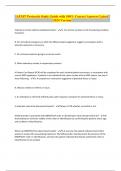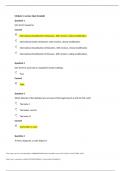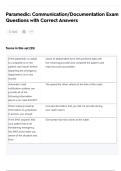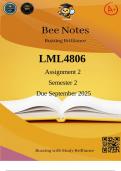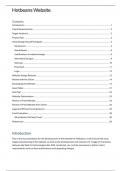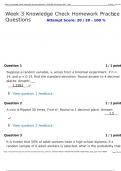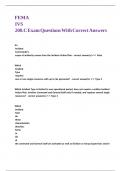Topic 4
Learning unit 15
• Discuss the model flow of the Deutsche Bank Liability Structure Model.
• Discuss the benefits of debt.
Tax shields.
Finance theorists have long recognized that the reduction in the corporation’s tax liability due
to the deductibility of interest expense is the most important financial benefit of debt in the
capital structure decision process.5 To model the tax shield of debt, we compare the tax
liability incurred with debt to the liability incurred if the company had no debt. Of course,
interest expense can shield income only to the extent that the company has income to be
sheltered. Loss carry forwards, the Alternative Minimum Tax, and accelerated tax
depreciation all can reduce the value of the interest tax shield. In some cases it is also
necessary to factor in the tax loss generated by the exercise of employee stock options,
even though this loss is not recognized for financial accounting purposes. Prior to 2001,
there were a number of high-tech companies whose entire taxable income was offset with
such tax losses despite having no net debt. While debt is tax advantaged at the corporate
level, the relative advantage of debt over equity is typically reduced once both corporate and
investor taxes are considered. The differential tax rates on interest income, dividend income,
and capital gains that are specified in each country’s tax code are key drivers of the net tax
benefit of debt.
Temporary use of debt to finance capital expenditures or dividends.
Debt cuts both ways with respect to funding capital expenditures (“Capex”) and dividends:
too much debt on a permanent basis is dangerous, but the flexibility to fund expenditures
temporarily using more debt can be beneficial. That is, when companies cannot fully fund
value-adding capital projects and (in some cases) maintain the common stock dividend,
shareholder value can be lost. If we assume that the cost of issuing new equity is high, it
may be advantageous for the company to increase debt temporarily to fund the shortfall and
avoid the opportunity cost of not making the investment (or maintaining the dividend).
To illustrate this point, let’s consider a company for which a mid-BBB rating7 represents the
optimal balance between the present value of any tax shields and the expected distress
costs of debt. If there is some possibility that Capex cannot be fully funded out of volatile
operating cash flow, DBLSM may indicate an optimal target rating of BBB+ with a fallback of
BBB-. This means that the extra debt capacity (more than what would otherwise be
considered optimal) that is built up in good years (consistent with a BBB+ rating) is expected
to be drawn upon in bad years (to the point where the rating is allowed to fall to BBB-). The
willingness to tolerate this fallback level is based in large part on the probability that the firm
will generate sufficient cash flow to repay the temporary debt quickly enough to avoid the
higher costs of servicing debt with lower ratings. In general, the more volatile are the
company’s operating cash flows, the higher the target rating must be to preserve the debt
capacity necessary to finance Capex. At the same time, though, the higher is the rate of
mean reversion in operating cash flows, the lower is the fallback rating that can be tolerated
because of the higher probability that the temporary debt will be rapidly repaid. In our
analysis of shortfalls of Capex or dividends that cannot be covered out of operating cash
flow, we assume that the company will always
Learning unit 15
• Discuss the model flow of the Deutsche Bank Liability Structure Model.
• Discuss the benefits of debt.
Tax shields.
Finance theorists have long recognized that the reduction in the corporation’s tax liability due
to the deductibility of interest expense is the most important financial benefit of debt in the
capital structure decision process.5 To model the tax shield of debt, we compare the tax
liability incurred with debt to the liability incurred if the company had no debt. Of course,
interest expense can shield income only to the extent that the company has income to be
sheltered. Loss carry forwards, the Alternative Minimum Tax, and accelerated tax
depreciation all can reduce the value of the interest tax shield. In some cases it is also
necessary to factor in the tax loss generated by the exercise of employee stock options,
even though this loss is not recognized for financial accounting purposes. Prior to 2001,
there were a number of high-tech companies whose entire taxable income was offset with
such tax losses despite having no net debt. While debt is tax advantaged at the corporate
level, the relative advantage of debt over equity is typically reduced once both corporate and
investor taxes are considered. The differential tax rates on interest income, dividend income,
and capital gains that are specified in each country’s tax code are key drivers of the net tax
benefit of debt.
Temporary use of debt to finance capital expenditures or dividends.
Debt cuts both ways with respect to funding capital expenditures (“Capex”) and dividends:
too much debt on a permanent basis is dangerous, but the flexibility to fund expenditures
temporarily using more debt can be beneficial. That is, when companies cannot fully fund
value-adding capital projects and (in some cases) maintain the common stock dividend,
shareholder value can be lost. If we assume that the cost of issuing new equity is high, it
may be advantageous for the company to increase debt temporarily to fund the shortfall and
avoid the opportunity cost of not making the investment (or maintaining the dividend).
To illustrate this point, let’s consider a company for which a mid-BBB rating7 represents the
optimal balance between the present value of any tax shields and the expected distress
costs of debt. If there is some possibility that Capex cannot be fully funded out of volatile
operating cash flow, DBLSM may indicate an optimal target rating of BBB+ with a fallback of
BBB-. This means that the extra debt capacity (more than what would otherwise be
considered optimal) that is built up in good years (consistent with a BBB+ rating) is expected
to be drawn upon in bad years (to the point where the rating is allowed to fall to BBB-). The
willingness to tolerate this fallback level is based in large part on the probability that the firm
will generate sufficient cash flow to repay the temporary debt quickly enough to avoid the
higher costs of servicing debt with lower ratings. In general, the more volatile are the
company’s operating cash flows, the higher the target rating must be to preserve the debt
capacity necessary to finance Capex. At the same time, though, the higher is the rate of
mean reversion in operating cash flows, the lower is the fallback rating that can be tolerated
because of the higher probability that the temporary debt will be rapidly repaid. In our
analysis of shortfalls of Capex or dividends that cannot be covered out of operating cash
flow, we assume that the company will always




